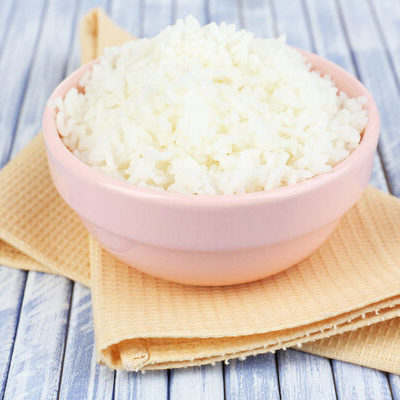
Rice
What is Rice?
Rice (Oryza sativa) is a starchy cereal grain that can be eaten alone or used as an ingredient in a variety of dishes. This grain is a staple food for one-half of the global population and is the second most-consumed cereal crop in the world. In fact, the average American consumes over 20 pounds of rice every year. The most popular varieties of this grain include:
- indica
- japonica
- aroma
According to Healthline, the top brands are:
- Lundberg Family Farms
- RiceSelect
- Pride of India
- Lundberg Family Farms
- North Bay Trading Company
- Thrive Market
- Lotus Foods
- Planet Rice
- Shirakiku
- Seeds of Change
Origin of rice
Cultivation can be traced to ancient China. It is believed that the Chinese started cultivating this grain 4,000 years ago. Not surprisingly, this food is an integral part of Chinese culture, as several ceremonies are held to cultivate and harvest this crop. This food was later introduced to India and eventually made its way to Greece.
Since then, many varieties of this food have developed, and the original form is still debated. By the end of the 17th century, this crop was prevalent in Africa. In the mid-18th century, it is believed that slaves who were transported to the New World introduced it to the Americas. Following that, this food’s popularity spread across the globe.
Function
This grain can be used to make breakfast cereals, noodles, and beverages like milk or wine. It is also popular in salads, curries, sushi, arancini, dolmades, and other cultural delicacies. By-products obtained from this crop can be used as a livestock feed.
Nutrition
A 100g serving of the short-grain type of this grain offers:

The health benefits of this grain vary according to type. Brown rice is thought to possess more nutrients than the white variety. Since white rice is refined and polished, it is devoid of germs and bran, offering less nutritional value. Some notable health benefits of the brown type of this grain include improved heart health, as well as plenty of vitamins and minerals.
However, this grain may have side effects. It may rob the body of iron and zinc. Also, it may have a high concentration of heavy metals, if grown in polluted areas.
Commercial production
In 2018, the USA produced 8.7 million metric tons of this grain, which increased to 10.2 million metric tons the following year. Rice seed or seedling is the raw material used for the commercial production of this crop. The use of irrigation, fertilizers, pesticides, and herbicides boosts this crop’s yield. Land preparation is the first and most crucial stage to ensure the growth of the seedling.
The commercial production starts by planting dripping-wet seedlings in a well-prepared delta or terrace bed. Sometimes when the seedlings reach a specific size, they are transplanted to a paddy field. When the grains are mature, water is drawn off from the fields. The yellowing and sagging of the grains are a sign that they are ready for harvesting. The size of the operation and quantity of mechanization available determines if the rice will be harvested by hand or machine. When harvesting is completed, the grain is allowed to dry in the presence of sunlight.
Application
This food is a delicious and healthy addition to any diet. Cooking and storing it properly will ensure you get the best nutritional value while boosting its shelf life. Uncooked rice should be stored in an airtight container at room temperature. This way, the grain can last up to a year (for best flavor and nutrients) or two years if moisture is kept out. Cooked rice should be stored in a fridge for not more than one week, but can last up to six months when stored in an airtight container in the freezer.
Rice recipes
This grain complements a variety of other foods. Here are some popular recipes:
- Sausage & Fennel Risotto
- One-Pot Creamy Chicken and Rice Casserole
- Skillet Bibimbap Pizza
- Garlic Butter Rice
- Vegetable Biryani
FDA Regulation
The Food & Drug Administration categorizes rice as a raw agricultural commodity and regulates its growing, harvesting, and packaging. The FDA also offers a reference amount consumed per eating occasion for this grain. Furthermore, the FDA mentions rice flour as one of the optional requirements for the specific standardization of cheese and its related products.
References
Sterling, Justine. “7 Things You Never Knew About Rice.” Food & Wine, Food & Wine, 2 June 2017, www.foodandwine.com/news/7-things-you-never-knew-about-rice.
Shahbandeh, M. “Rice Consumption by Country 2019.” Statista, Statista, 23 Mar. 2020, www.statista.com/statistics/255971/top-countries-based-on-rice-consumption-2012-2013/.
Atli, Arnarson Ph.D. “Rice 101: Nutrition Facts and Health Effects.” MedicalNews Today.com, MediLexicon International, www.medicalnewstoday.com/articles/318699
Couchman, Collette. “Using and Storing Rice (E2072).” Canr.msu.edu, MSU Extension, www.canr.msu.edu/resources/using_and_storing_rice_e2072.
“CFR – Code of Federal Regulations, Title 21.” Accessdata.fda.gov, U.S Food & Drug Administration, 1 Apr. 2019 https://www.accessdata.fda.gov/scripts/cdrh/cfdocs/cfcfr/CFRSearch.cfm?fr=112.3&SearchTerm=rice
